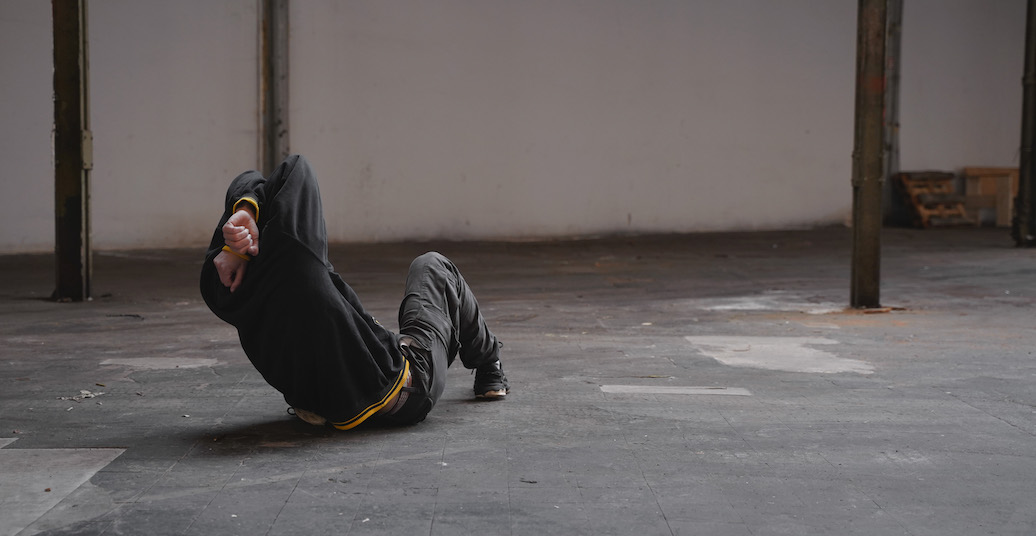In “Foreland – Bach and Britten”, a supplementary program to soundance festival berlin, choreographer and dancer Nitsan Margaliot and cellist Isaac Lottman embody two suites from composers Johann Sebastian Bach and Benjamin Britten. The German premiere took place on 23 May 2023 in the St. Matthew Church.
“You see the frequencies moving right in front of you.”
Isaac Lottman
In the majority of his work, choreographer and dancer Nitsan Margaliot explores alternative archives, including material coming from personal family stories or as a homage to Israeli artists who died during the HIV/AIDS pandemic. With “Foreland – Bach and Britten” he shows an updated version of two solos premiered seven years ago. With this symbol of the past, he researches his own choreographic archive from a new perspective.
Cellist Isaac Lottman plays Johann Sebastian Bach’s Suite No. 5 in C-Minor (1717-1723). He has a unique way of making music. I hear his breath as he sucks it in and expels it again through pursed lips. Now and then, he drags the soles of his feet briskly across the floor. It is a full-body, dancerly way of playing, and for some minutes, alone, he fills the modern inner space of the St. Matthew Church with it. Nitsan Margaliot, who in the second movement comes to stand near the cellist, seems for several moments to be simply listening to the music, feeling it, before he starts to move at the beginning of the third movement. His hands lead him, wavelike, through the space, as if he is carrying water, lifting it, pouring it, putting it down. Over and over there are moments in which he pauses to observe the music. The dance is not illustrative. Rarely does the repetition of a sound sequence correspond to the repetition of a physical movement. When the rhythms of the music and the dance do correspond, it feels spontaneous, like a playful conversation between the two artists.
In the second part, to Benjamin Britten’s Suite No. 1 for Violoncello (1962), musician and dancer take the stage at the same time. Margaliot sits on his left heel, his right leg bent. Over the course of the first movements he slowly collapses. The backs of his hands lie on the floor and his entire body is under curved tension. Even when he comes to a halt, his body seems heavy, as if gravity was ten times stronger for him. His head falls to the rhythm of the plucked tones that Lottman begins to play in the fifth movement. Hands on his neck, Margaliot turns on his own axis as if to unscrew his constantly drooping head in waltz time. As the last movement resonates powerfully through the St. Matthew Church, it seems as if the music is tearing the dancer apart from the inside. And as the last note fades a perfect silence descends for a moment. In comparison to the first solo, dance and music are more frequently synchronized here. This rapprochement, which for me is quite visible, probably stems from the fact that the choreographer was able to meet Britten’s music more at eye level, as he says in the artist talk following the performance. The playful conversation around Bach’s suite becomes, in the context of Britten’s music, rather a clearly structured dialogue.
English translation by Cory Tamler
The seventh edition of soundance festival berlin takes places from 15-18 June 2023 at DOCK 11, you find the program and ticket information at soundance-festival.de.




